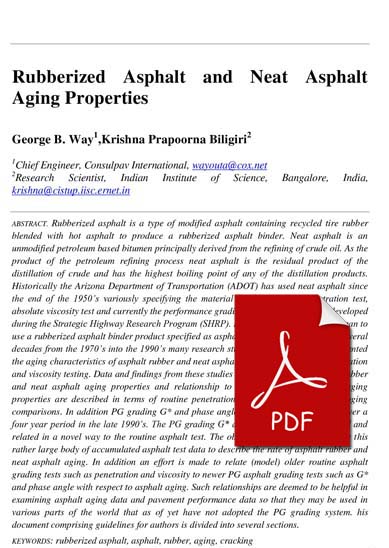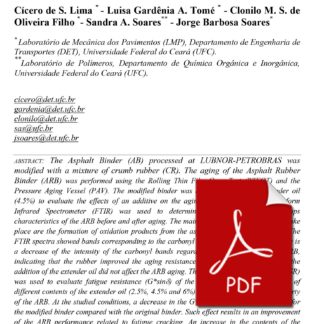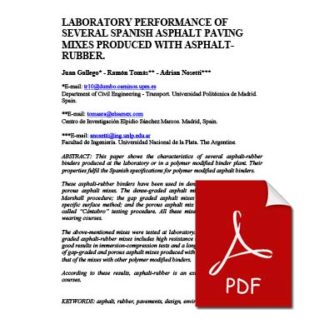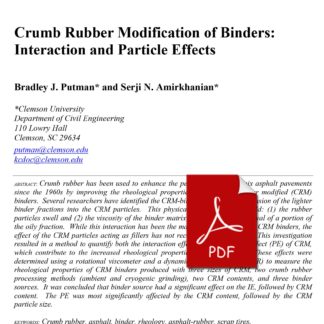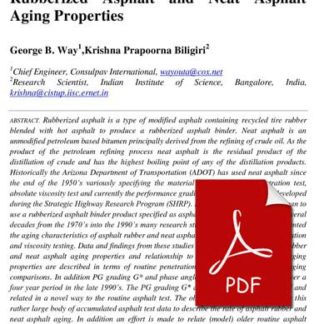Description
Rubberized asphalt is a type of modified asphalt containing recycled tire rubber blended with hot asphalt to produce a rubberized asphalt binder. Neat asphalt is an unmodified petroleum based bitumen principally derived from the refining of crude oil. As the product of the petroleum refining process neat asphalt is the residual product of the distillation of crude and has the highest boiling point of any of the distillation products. Historically the Arizona Department of Transportation (ADOT) has used neat asphalt since the end of the 1950’s variously specifying the material by the standard penetration test, absolute viscosity test and currently the performance grading system (PG Grading) developed during the Strategic Highway Research Program (SHRP). Later in the 1970’s ADOT began to use a rubberized asphalt binder product specified as asphalt rubber. Over a period of several decades from the 1970’s into the 1990’s many research studies and papers have documented the aging characteristics of asphalt rubber and neat asphalt (bitumen) in terms of penetration and viscosity testing. Data and findings from these studies are used to develop asphalt rubber and neat asphalt aging properties and relationship to cracking in the field. The aging properties are described in terms of routine penetration and viscosity type asphalt aging comparisons. In addition PG grading G* and phase angle data are also represented over a four year period in the late 1990’s. The PG grading G* and phase angle are examined and related in a novel way to the routine asphalt test. The objective of this paper is to use this rather large body of accumulated asphalt test data to describe the rate of asphalt rubber and neat asphalt aging. In addition an effort is made to relate (model) older routine asphalt grading tests such as penetration and viscosity to newer PG asphalt grading tests such as G* and phase angle with respect to asphalt aging. Such relationships are deemed to be helpful in examining asphalt aging data and pavement performance data so that they may be used in various parts of the world that as of yet have not adopted the PG grading system. his document comprising guidelines for authors is divided into several sections.

